Money
Chure belt turns into tourist hotspot amid conservation concerns
As development picks up across the foothills, experts say tourism must be sustainable.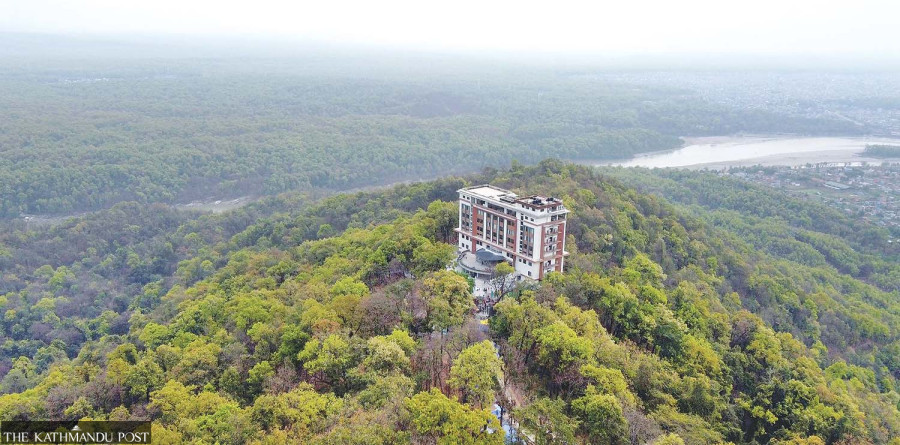
Ghanshyam Gautam
Seventy-one-year-old Dirgha Bahadur Kumal is astonished by the rapid development of Nuwakot, an ancient town and protected area in the Chure hills.
A lifelong resident of Tinau rural municipality-1 in Palpa, he has been foraging and farming on the Nuwakot hill since childhood. Back then, Nuwakot had barely eight or ten houses.
Now, homes are sprouting daily, and new hotels are opening. The contrast between the past, when he farmed the land, and the present, as houses rise on that same soil, is stark.
When Dirgha Bahadur was a teenager, Nuwakot had dense forests and sparse housing, but it was teeming with people. Travellers from Palpa, Gulmi, Arghakhanchi, and Syangja passed through the area with ghee to barter for salt from India in Khasyouli.
Nuwakot served as a checkpoint and resting place before descending.
Horses, mules, and pedestrians made the hill bustling. But everything changed when the Butwal-Palpa road was built as Nuwakot lost its lustre and fell silent.
Now, the village is making a comeback.
Dirgha Bahadur’s aging and Nuwakot’s transformation run parallel.
At 60, his sparkle has returned. Today, around 50 motorcycles and 15–20 jeeps arrive daily. Many also get there by cable car.
“Life comes full circle,” he said. “In our youth, people came here out of hardship. Now, they come for fun and leisure.”
What was once a rest stop for salt traders has become a destination to unwind. Some reach Nuwakot by hiking four hours from Butwal, others drive, and many take the cable car. This increased footfall has turned the area into a hotspot for domestic and foreign tourists, and hotels, restaurants, and homestays have sprung up to cater to them.
In the past five years, Nuwakot—historically linked to the Anglo-Nepal War (1814-16)—has seen growing infrastructure and commercial interest. In just two years, a dozen restaurants have opened, backed by local entrepreneurs from Butwal and Palpa, each investing between Rs2.5 million and Rs20 million.
Like Nuwakot, Basantapur Hill at the northern tip of Butwal has also become lively in the past two years. At dusk, lights make it feel like the city of Bhairahawa has stretched up into the hills. The twinkling views of Butwal and the streetlights of the Siddhartha Highway seen from Basantapur are stunning.
But despite the view, only two or three local homes remain. Around 8 to 10 households were relocated with compensation from the Lumbini Cable Car company, which now dominates the area.
Indian tourists are particularly drawn to it, escaping Butwal’s oppressive heat for the cool of Basantapur—only a 10-minute cable car ride away.
Although there are no large hotels, the cable car company runs small restaurants. The IME Group, which operates the Lumbini Cable Car, is planning a five-star hotel at Basantapur with an investment of over Rs3 billion.
Nuwakot and Basantapur fall within the Mahabharat-Chure hill range and have rapidly become commercial hotspots over the past two years. The Butwal sub-metropolis and Tinau rural municipality have prioritised infrastructure development in Nuwakot. Roads have been blacktopped, connecting the area with the cable car base station.
The two hills, now linked by separate cable car systems—Lumbini Cable Car at Basantapur and Siddhartha Cable Car at Nuwakot—have become thriving destinations.
However, the surge in development has also raised concerns about encroachment in the ecologically sensitive Chure region.
Local communities have no ownership stakes in the cable car companies; Chandra Dhakal’s IME Group backs the Lumbini Cable Car, while the Prabhu Group supports the Siddhartha Cable Car.
The Himalayas’ youngest range, the Chure or Shivalik Hills, formed during the Himalayan uplift, stretches from India’s Brahmaputra River to Pakistan’s Indus. In Nepal, the Chure covers 800 kilometres across 36 districts.
Lumbini Province extends from Bardghat in the east to Bardiya in the west, with a width of 10 to 15 kilometres. This terrain varies from narrow gorges to broad green ridges. These once-isolated forested hills near the flat Tarai plains are now booming as tourist destinations.
Business activity is growing from Nuwakot and Basantapur to several other Chure hills stretching west to Bardiya. Hotels and restaurants are opening, and infrastructure is being built.
For example, in Gaindakot, near the western Narayani River, the IME Group has built the Maulakalika Cable Car. The group has also invested over Rs1 billion in opening the luxury ILA Hotel & Resort inside the Chure forest. Maulakalika is a religious site, giving the area spiritual and tourism significance.
Elsewhere, development continues in places like Daunne (Nawalparasi), Sansarkot (Bardghat), Ghaiyabari (Sunwal), Jhingamara above Sainamaina (Rupandehi), Dhankhola (Kapilvastu), and Devikot in Rapti rural municipality-9 of Dang.
Sansarkot, in Bardghat Municipality–2 of West Nawalparasi, is just six kilometres from the town. Local entrepreneurs there serve organic chicken dishes to domestic tourists.
Restaurants have opened in Ghaiyabari, eight kilometres from Sunwal. Visitors are drawn by the sweeping views of the Palpa hills and the Tarai plains, and locals live there, too.
Likewise, hotels and restaurants are expanding in Jhingamara, 12 kilometres from Murgiya in Rupandehi and technically part of Tinau Rural Municipality–1 in Palpa.
Notably, Pawa Hotel Pvt Ltd, a well-known hospitality brand, plans to invest over Rs2 billion to build a five-star hotel there. The entire site lies within the Chure region.
The company’s CEO, Dhruba Neupane, said Indian tourists are increasingly attracted to the area’s cool climate and green surroundings. “We’ve already purchased 350 ropanis [approximately 18 hectares] of land,” he said. “We’re starting construction with a detailed project plan.”
Devikot in Dang is another emerging attraction.
Ridi Rapti Group Pvt Ltd has launched a Rs20 million agro-resort and paragliding project, drawing attention to the site.
The company’s chairman, Man Bahadur Budha Magar, said Devikot could rival Pokhara as a paragliding hub and emerge as Lumbini Province’s top destination.
“We’ve completed test flights and are also building a resort,” he said. The panoramic views of the Rapti plains, the Rapti River, Banglachuli, and even parts of India make it a stunning tourist site.
The hills of the Chure region, especially those close to the Tarai, offer both cool air and scenic vistas. From Maulakalika to Basantapur, Nuwakot, Jhingamara, and Devikot, gentle breezes blow the year round.
While the Tarai bakes at 40°C, the Chure hills rarely exceed 25°C. This climatic contrast is pulling domestic and Indian tourists, said Madhav Nepal, a hotel entrepreneur and chairperson of the Nuwakot Development Committee.
“It’s our responsibility to conserve the Chure,” he said. “We must preserve it while also making responsible use of it. That’s why more businesses are setting up here.”
He claimed that most hotels and restaurants in Nuwakot are built on private land and don’t encroach on protected zones.
The President Chure Terai Madhesh Conservation Development Committee’s implementation office in Butwal is tasked with protecting Chure areas in nine districts of Lumbini Province, covering 54 local units. The committee and forest offices monitor encroachment from settlements and infrastructure development.
Ananath Baral, chief of the implementation unit, said, “Unregulated settlement, infrastructure expansion, quarrying, and river exploitation are major challenges in Chure.”
However, he admitted the implementation unit lacks direct authority over regulation, its oversight resting mainly with the committee’s board and local forest offices.
Scientifically, the Chure range is geologically fragile, consisting of loose sedimentary rocks, susceptible to environmental disruption.
Environmental expert Yubaraj Kandel warned of the risks.
“Despite knowing the fragility of the Chure, destructive development in the name of tourism is accelerating. This could trigger major disasters.”
Although the government formed a committee to keep the Chure free of settlements, that goal is far from realised. Hills across the Chure are now dotted with growing human habitation and infrastructure.




 9.12°C Kathmandu
9.12°C Kathmandu
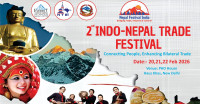


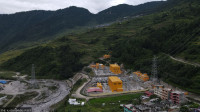
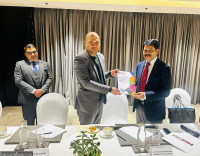


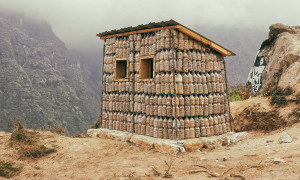


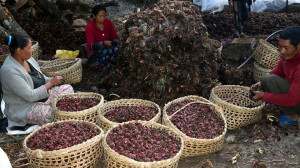


%20(1).jpg&w=300&height=200)
